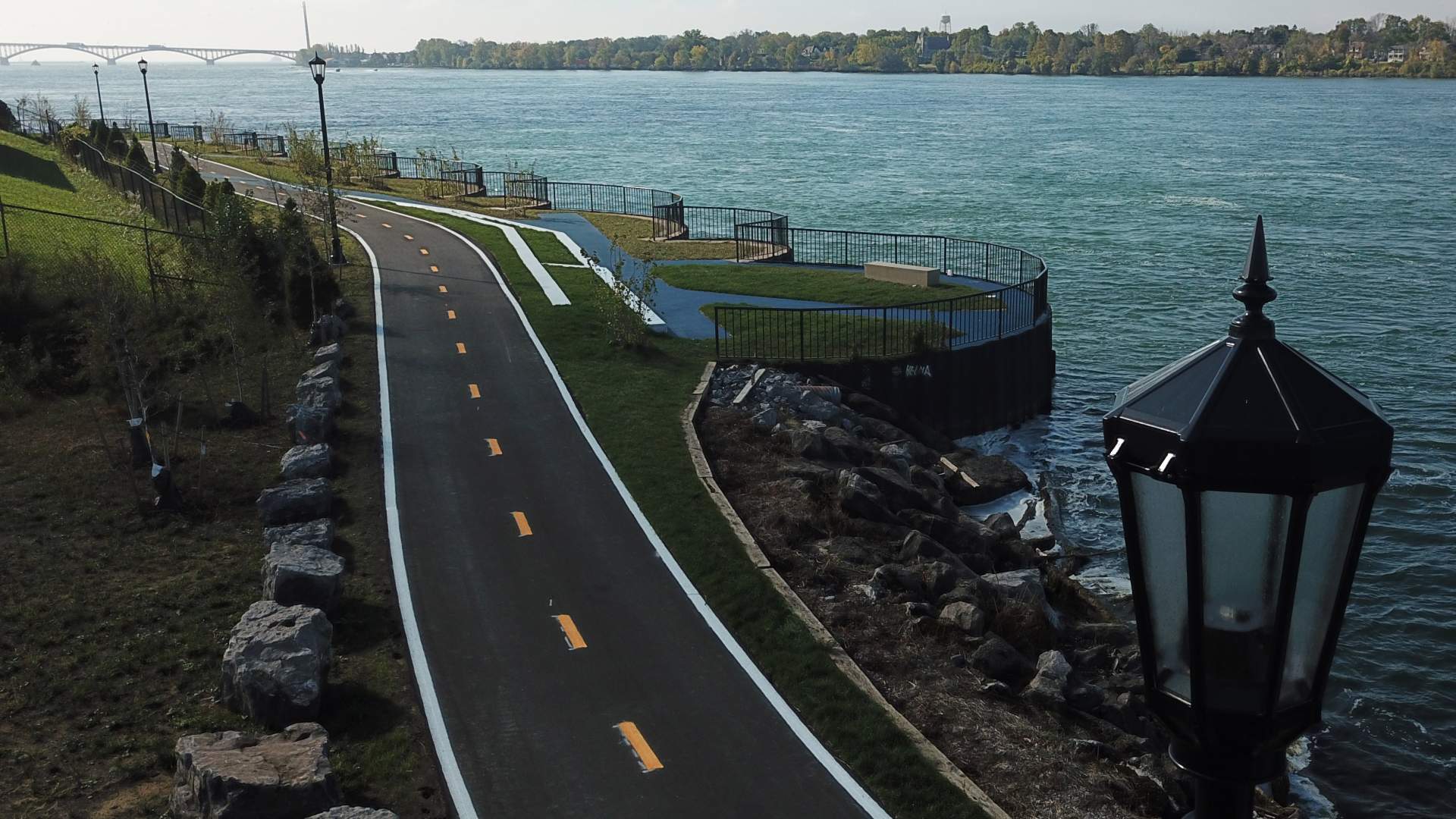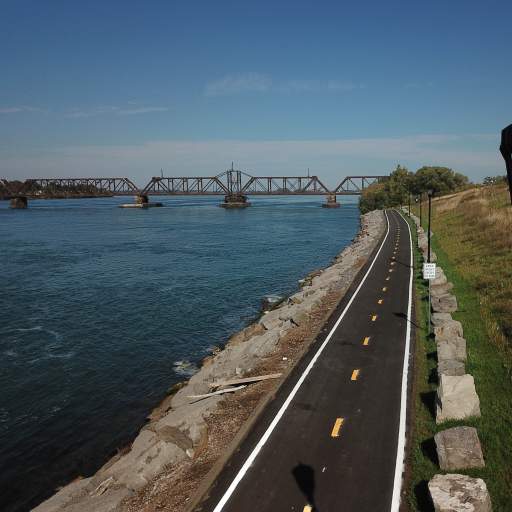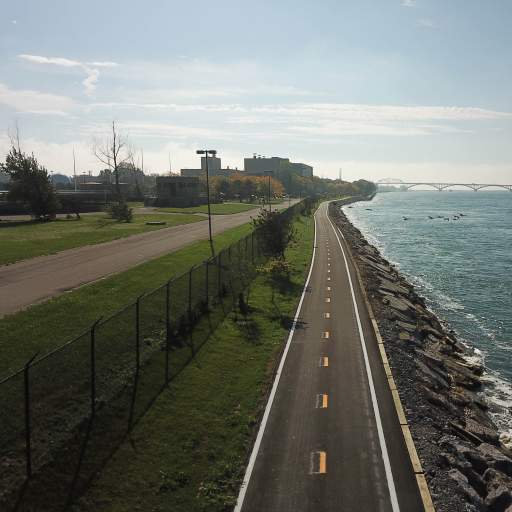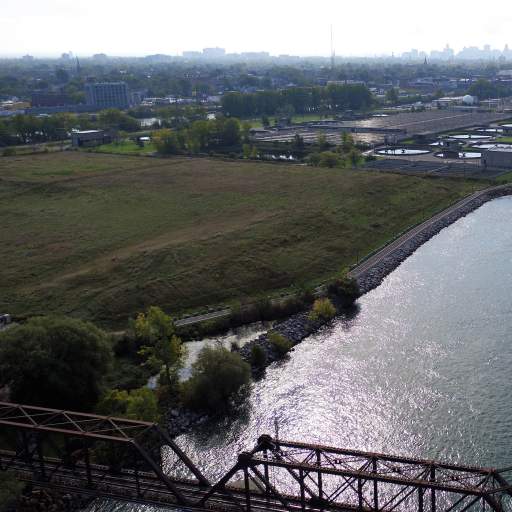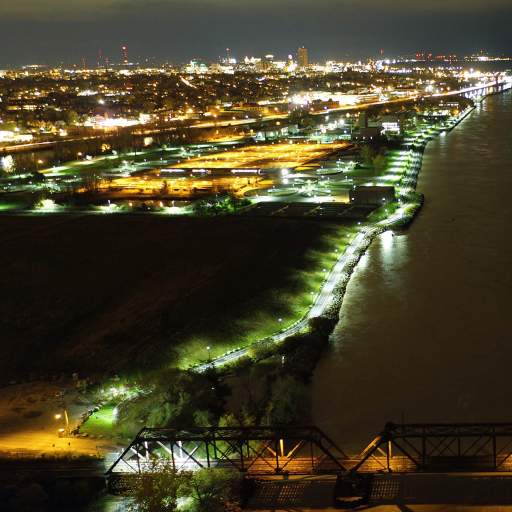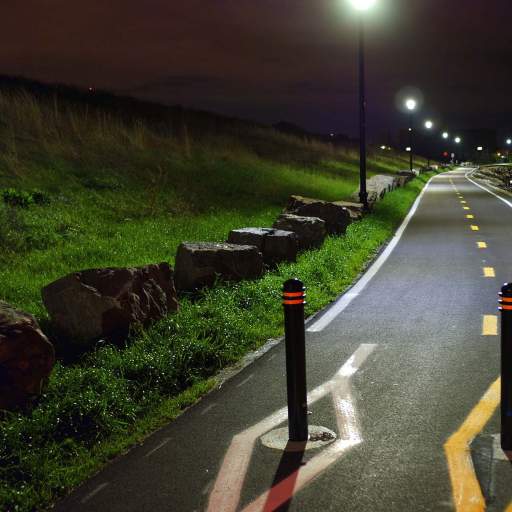Buffalo Riverwalk Shoreline Trail
Buffalo, New York
Situated along the Niagara River, the Buffalo Riverwalk Shoreline Trail is a multi-use recreational spine connecting parks and offering views of shoreline activity.
The project served to upgrade the trail, improve safety, and enliven the space along the re-emerging Niagara Street corridor with $1.3 million in federal funding. Improvements included invasive species removal, railing repairs, energy-efficient lighting installation, and shoreline restoration.
At the bulkhead lookouts, a new garden was created to take advantage of the spectacular views of the Niagara River. The garden area provides an immersive experience as trail users enter this remarkable space, then remerge to open and sunny stretches along the trail. Public art installations were added and took the form of colorful mosaics inlaid on the sitting surfaces of the benches and paintings that celebrate the Native American history that is so closely associated with the river.
Given the trail’s location along the Niagara River, an international boundary waterway, the project involved extensive coordination with various agencies including the Canadian National Railway, NYSDEC, NYSDOT, SHPO, NYS Department of State, the International Joint Commission, and the Department of the Army. An extensive environmental review and documentation process was required, and several permits were obtained prior to construction.
